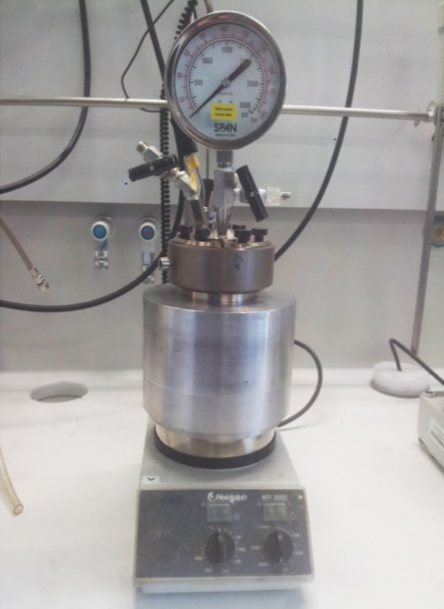Lessons Learned: Hazardous Autoclave Failure
Hydrogenation Autoclave
What Happened:

Several researchers have been utilizing a small hydrogenation autoclave on a routine basis.
The autoclave vessel is similar to the apparatus featured in photo 1. The procedure entails the use of hydrogen gas and Raney nickel which react with the substrate under pressure. During an experiment, the researchers and other building occupants heard a very loud “BANG”. This rapid depressurization expelled the contents of the autoclave vessel into the fume hood.
After examination of the damaged vessel and consultation with the manufacturer, it was determined that metal fatigue had caused the pressure disc of the vessel to fail during normal operating conditions.
What went right?
The reaction was performed in the fume hood with a blast shield
which acted to safely confine the contents of the reaction to the rear of the fume hood.
What should be done differently?
Because there was not an actual fire, the researchers called the non-emergency line of the fire department to report the incident. Always use 911 to report any fire or smoke-related incident, in- cluding extinguished fires.
How to prevent this in the future:
Creating process SOP’s for hazardous procedures will help to define all the risks and their associat- ed mitigation methods. Laboratory managers should also consider developing an inspection/ maintenance schedule for all laboratory equipment. Frequent and regular equipment inspections could help to identify problems before a system failure occurs.